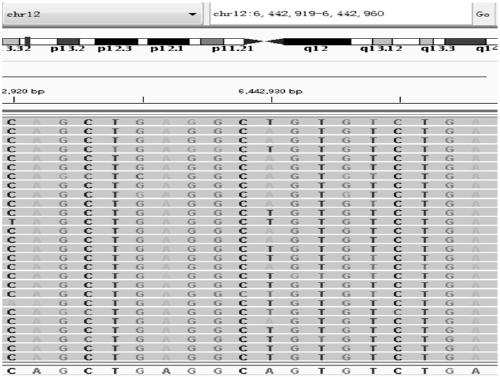Probe set and kit for detecting pathogenic gene of autoinflammatory disease
A technology of inflammatory diseases and disease-causing genes, applied in the field of biomedicine, can solve problems such as the inability to implement prenatal interventions in genetic counseling, the pain of patients and their families, and hinder the quality of the population, so as to shorten the inspection cycle, shorten the detection time, The effect of improving diagnostic efficiency
- Summary
- Abstract
- Description
- Claims
- Application Information
AI Technical Summary
Problems solved by technology
Method used
Image
Examples
Embodiment 1
[0068] A probe set for detecting autoinflammatory disease-causing genes, the probe set includes probes capable of specifically capturing the following 50 genes at the same time: ADAR, COPA, NLRP3, SLC29A3, HPS1, HPS6, RNASEH2C , TNFRSF1A, GUCY2C, MVK, LACC1, RNASEH2B, RNF31, PSTPIP1, MEFV, NOD2, PLCG2, NLRP1, CARD14, LPIN2, ACP5, RNASEH2A, ADGRE2, NLRP12, ADAM17, NLRC4, IL36RN, IL1RN, IFIH1, AP1S3, RBCK1, FERMT1 , SAMHD1, ADA2, USP18, HPS4, TREX1, COL7A1, SH3BP2, OTULIN, TMEM173, PSMB8, TNFAIP3, SHARPIN, DDX58, POLA1, IL10, IL10RA, IL10RB, ISG15.
[0069] The probes included in capturing and detecting each of the above genes include probes whose base sequences are shown in SEQ ID No. 1-50.
Embodiment 2
[0071] A kit for detecting autoinflammatory disease-causing genes, comprising the following components: the probe set (160ul, 150ng / ul) obtained in Example 1, enrichment buffer (208ul), hybridization buffer ( 800ul), binding buffer (3.2ml), first rinse (9ml), second rinse (45ml), NaOH solution (0.1M, 1ml), Tris-HCl buffer (1M, pH 7.5, 1.2ml) , PCR reaction solution (580ul), TE buffer solution (800ul). Wherein each buffer composition is as follows:
[0072] 1. Enrichment buffer (per 20ul):
[0073] Human cot-1 DNA (purchased from Invitrogen), 7ul; salmon sperm DNA (purchased from Invitrogen), 3ul;
[0074] Specific blocking primers as shown in SEQ ID No.51 and SEQ ID No.52, a total of 10ul, each primer concentration is 1nmol / ul:
[0075] 2. Hybridization buffer: 5 times concentration of SSPE, 5 times concentration of Denhardt solution, 5mM EDTA, 0.1% SDS;
[0076] 3. Binding buffer: 1M NaCl, 10mM Tris-HCl (pH 7.5), 1mM EDTA
[0077] 4. The first rinse solution: 1 times the...
Embodiment 3
[0118] Test kit effect test for detecting autoinflammatory disease-causing genes:
[0119] Using the kit described in Example 2 of the present invention to detect 3 samples, the results confirmed that the capture rate of the target disease-causing / susceptible gene was satisfactory, and more than 50% of the original short sequences could be compared back to the reference sequence of the target region, the target region The average amount of effective sequencing data reaches 200Mb, and the average sequencing depth of the target region is 300X, which is much higher than the general genetic disease diagnosis requirements (generally 100X).
[0120] 1. Child patient number C150710C01201, male, 4 years old, was tested using the kit of the present invention, and the test results were as follows: figure 1 Shown is a mutation in the gene TNFRSF1A. A mutation occurs at chr12-6442930*, that is, a deletion mutation c.295T>A occurs in exon3, and the disease phenotype is periodic fever, aut...
PUM
 Login to View More
Login to View More Abstract
Description
Claims
Application Information
 Login to View More
Login to View More - R&D
- Intellectual Property
- Life Sciences
- Materials
- Tech Scout
- Unparalleled Data Quality
- Higher Quality Content
- 60% Fewer Hallucinations
Browse by: Latest US Patents, China's latest patents, Technical Efficacy Thesaurus, Application Domain, Technology Topic, Popular Technical Reports.
© 2025 PatSnap. All rights reserved.Legal|Privacy policy|Modern Slavery Act Transparency Statement|Sitemap|About US| Contact US: help@patsnap.com



